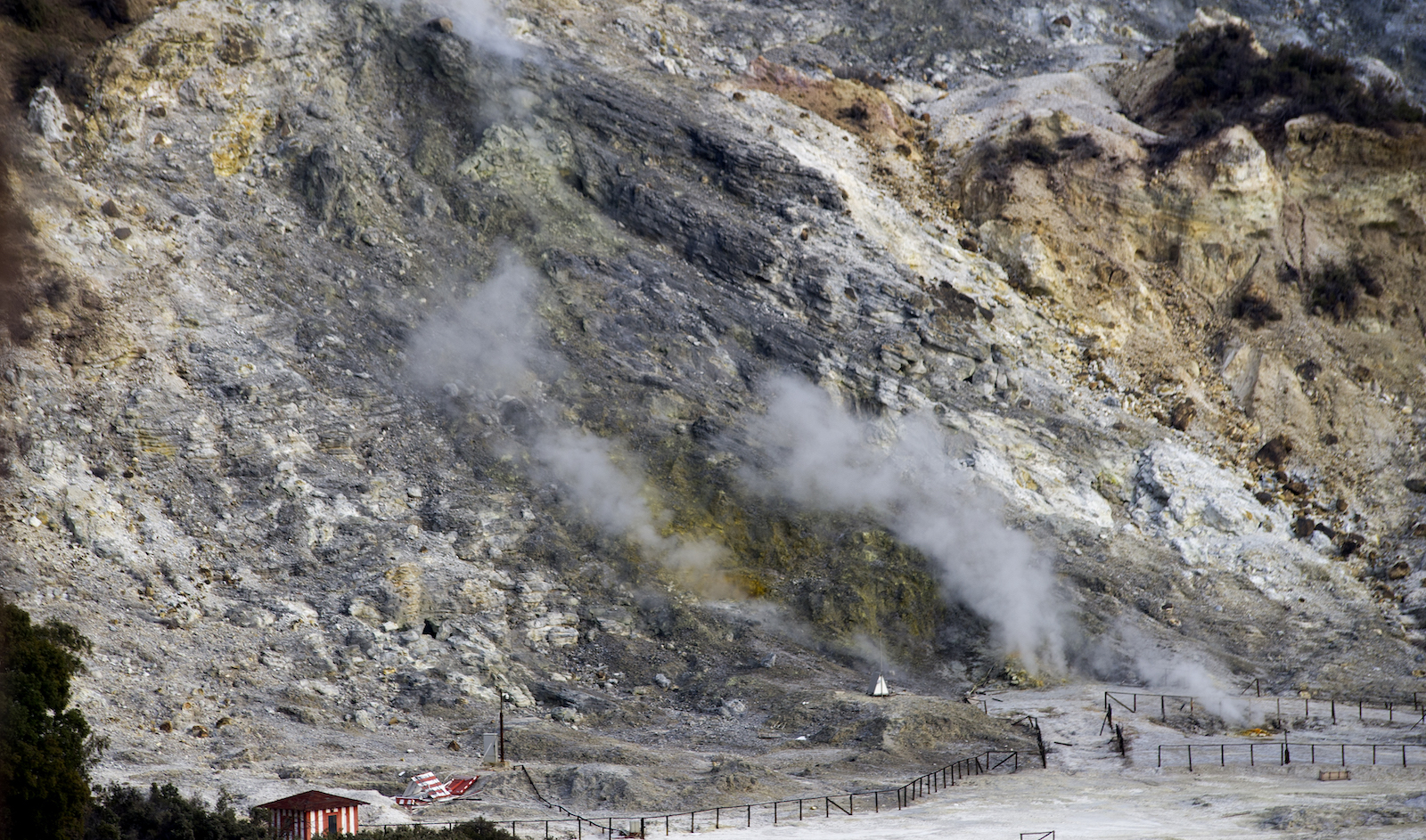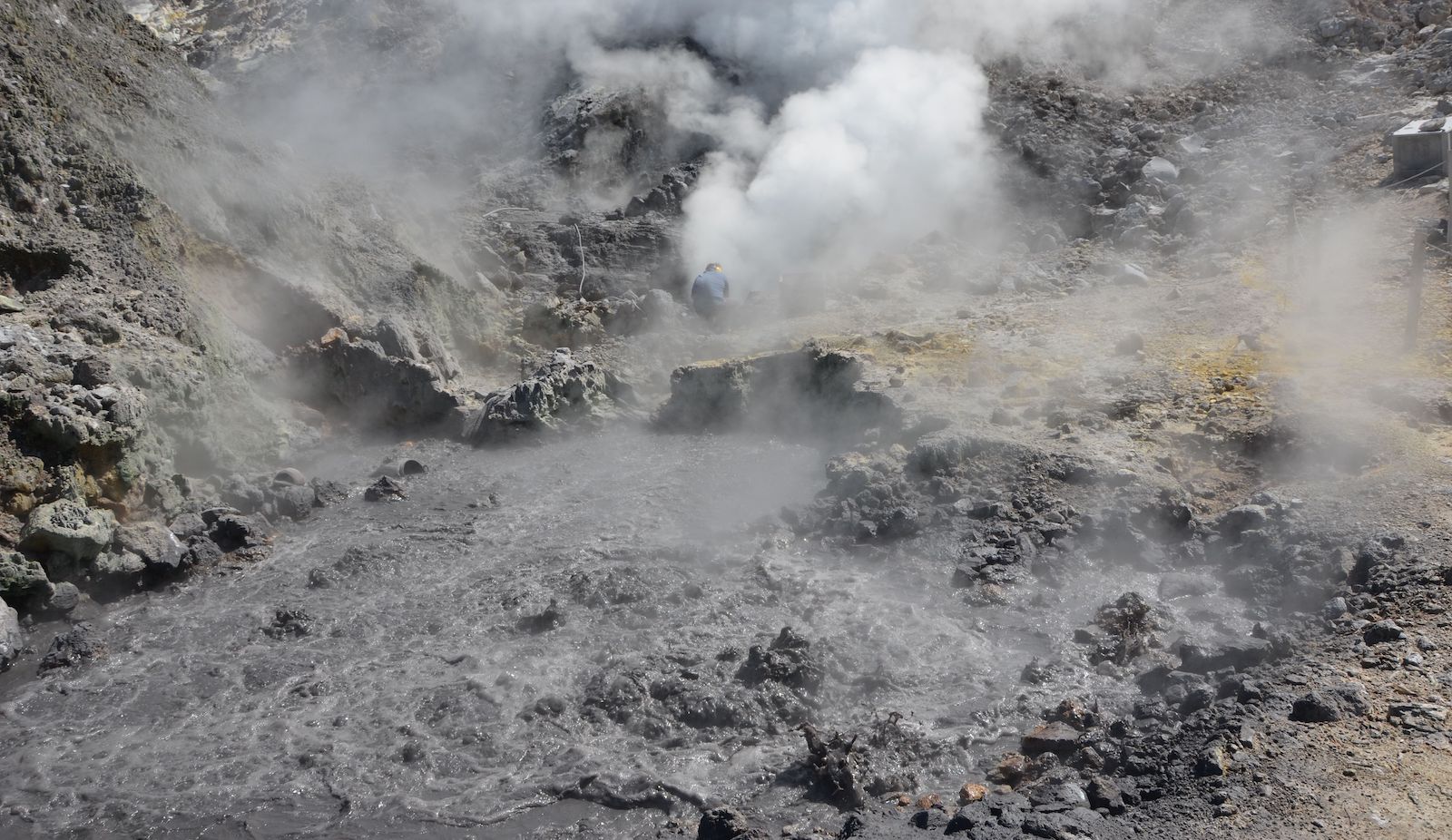Europe's most dangerous 'supervolcano' could be creeping toward eruption, scientists warn
Italy's Campi Flegrei is showing some troubling early warning signs, but scientists caution that its eruption is far from certain.

A long-slumbering "supervolcano" in Italy is getting closer to a potential eruption for the first time since 1538, a new study warns — and the consequences could be catastrophic.
The Campi Flegrei volcano, near Naples in southern Italy, has crust that is becoming weaker and more prone to rupturing, "making an eruption more likely", scientists behind a new study have said.
More than 1.5 million people live above the vast underground volcano complex, and half a million people have their homes inside its 7-mile-long (11 kilometers) caldera, which was formed after an enormous eruption 39,000 years ago.
Related: Yellowstone volcano super-eruptions appear to involve multiple explosive events
If Campi Flegrei were to reenact its largest previous eruption, it would punch molten rock and volcanic gases high into the stratosphere, unleash 100-feet-high (33.5 meters) tsunamis and spread a plume of sulfur and toxic ash that could plunge Earth into global winter for years — killing crops and causing mass extinctions. The researchers published their findings June 9 in the journal Communications Earth & Environment.
"Our new study confirms that Campi Flegrei is moving closer to rupture," study lead-author Christopher Kilburn, a professor of Earth Science at University College London, said in a statement. However, he cautioned that "this does not mean an eruption is guaranteed. The rupture may open a crack through the crust, but the magma still needs to be pushing up at the right location for an eruption to occur."
Campi Flegrei, which means "burning fields" or "fiery fields," is a sprawling, mostly-hidden network of 24 craters and edifices that stretches from its vast caldera opposite Vesuvius at the western edge of Naples into the nearby Gulf of Puzzuoli.
Get the world’s most fascinating discoveries delivered straight to your inbox.

Though Campi Flegrei is commonly referred to as a supervolcano, this hasn't been established for certain. Supervolcanoes are volcanoes that can produce eruptions of the highest magnitude — an 8 on the Volcano Explosivity Index — expelling more than 240 cubic miles (1,000 cubic kilometers) of material in the process.
Yet Campi Flegrei's biggest ever eruption ejected up to 70 cubic miles (285 cubic km) of material, ranking it as a still-disastrous category 7. One of the hazardous chemical elements that would be unleashed in the eruption's cloud is fluorine, which in sufficient quantities can kill plants and cause a disease called fluorosis in animals.
The volcano has been stirring since the mid-20th century, with bursts of heightened activity in the 1950s, 1970s and 1980s. Another period of unrest began in the last decade and is still ongoing, during which the ground below Pozzuoli, a town located on the volcano's roof, has risen by 4 inches (10 centimeters) each year, adding up to a total change in elevation of 13 feet (4 m) since the 1950s. Campi Flegrei is also experiencing persistent small earthquakes, with more than 600 detected in April — breaking its largest monthly total ever recorded in the region.
The subterranean ferment is likely being driven by volcanic gas seeping into the crust 2 miles (3 km) beneath Campi Flegrei's surface, which soaks it up like a sponge, the researchers said. This causes the crust to stretch, warp and slip, sending earthquakes rumbling to the surface. If enough volcanic gas enters the crust, the heat and pressure it provides can push the rocks beyond "critical degassing pressure," rupturing them and opening up a crack for the magma beneath to burst outwards in an eruption.

To see how likely an eruption may be, the researchers combined seismic readings with measurements of ground uplift to map estimates of the changing tensile strength of the region's crust (the maximum stress a material can take before breaking) and its proximity to rupture.
The researchers' model suggests that the crust beneath Campi Flegrei is breaking and not bending under pressure. Deep beneath Earth, the churn of underground gas and magma has been slowly flexing and weakening Campi Flegrei's crust since the 1950s, reducing its tensile strength to just a third of what it was in 1984, according to the study.
This means that even though the earthquakes in the region are not as powerful as they were in the 1980s, the weaker rock has the potential to rupture under smaller strains, giving seismologists fewer detectable earthquakes and people less notice to evacuate.
Related: The 12 biggest volcanic eruptions in recorded history
Despite this, the scientists say this doesn't mean a gigantic eruption is now inevitable. For volcanoes to blow, gases must build up faster than they can escape, and magma also needs to be able to move rapidly through the crust where a crack has formed — two conditions that scientists cannot know for certain have been met until an eruption takes place.
The same can also be said for the size of Campi Flegrei's potential eruption, which is difficult to predict but is much more likely to be small than large, according to the scientists.
"It's the same for all volcanoes that have been quiet for generations. Campi Flegrei may settle into a new routine of gently rising and subsiding, as seen at similar volcanoes around the world, or simply return to rest," Stefano Carlino, a researcher at the Vesuvius Observatory, said in the statement. "We can't yet say for sure what will happen. The important point is to be prepared for all outcomes."

Ben Turner is a U.K. based staff writer at Live Science. He covers physics and astronomy, among other topics like tech and climate change. He graduated from University College London with a degree in particle physics before training as a journalist. When he's not writing, Ben enjoys reading literature, playing the guitar and embarrassing himself with chess.
